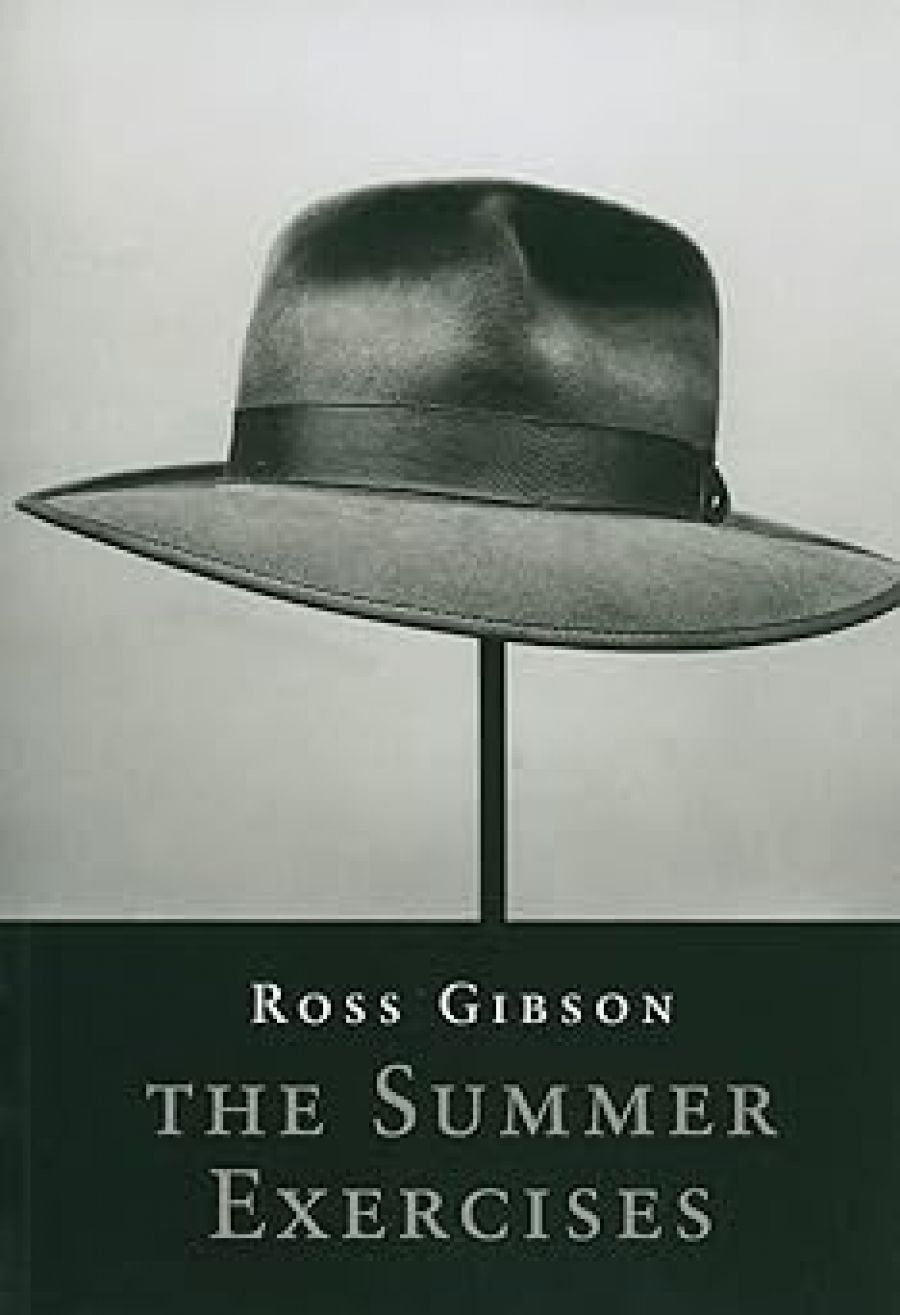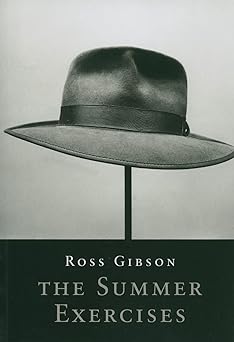
- Free Article: No
- Contents Category: Fiction
- Review Article: Yes
- Article Title: Putting back the shadow
- Online Only: No
- Custom Highlight Text:
Over the last two decades, Ross Gibson has earned an outstanding reputation for ground-breaking investigations into cultural memory, image and place, and for his strikingly innovative films and installations, his curatorial work on the Photographic Collection of the Sydney Justice & Police Museum, his foundational directorship of the Australian Centre for the Moving Image, and, of course, his highly imaginative non-fictional writing. With its eponymous allusions to William Empson and to Jonathan Raban, his Seven Versions of an Australian Badland (2002) announced its own haunting by earlier explorations of the pastoral and of the irreducible ambiguities in history’s traces.
- Book 1 Title: The Summer Exercises
- Book 1 Biblio: UWAP, $24.95 pb, 270 pp
- Book 1 Cover Small (400 x 600):

This new, fascinating and disturbing novel in some way amplifies the challenges of Seven Versions, with its interrogation of haunted location and repressed violent memory. Here, and in the conceit of the publishers’ notes interspersed throughout, Gibson invokes the Spiritual Exercises prescribed by the sixteenth-century founder of the Society of Jesus, Ignatius de Loyola, to develop and test the propensity for passion in neophytes. These exercises involve five daily meditations on the temptations and challenges of embodied experience.
The enabling device for this highly inventive reading – or, to use the chaplain’s words, ‘divination’ of the ‘war-bruised and confused’ Sydney in the wake of World War II – is the locum that a Jesuit chaplain elects for his spiritual exercises: not a rustic retreat, but the traffic of violent and extreme appetites at Sydney Central Police Station, where stories of crime and detection, addiction, disappearance, grief and longing unfold a larger narrative of the city’s darker economy. Through the passage of his ‘summer passion’, in turn excursively elastic and poetically compressed, the chaplain’s writing performs a seismograph of emotion and sensation ‘primed by constraint’.
Around 261 photos from the immense police archive, Gibson constructs his chaplain’s mosaic of ‘exercises’ over twenty-nine days. But if ‘unfold’ suggests explication, here much is left infolded in the gaps; much is productively left to the reader’s imagination.
As Machin, the older cop and mentor to the chaplain, says, detective work is ‘half investigation and half hallucination’. Like a modernist poet, Machin is a master of defamiliarisation: ‘Try to see what you are taking for granted … disregard all its colours. Try to see it more starkly, pencil-drawn without any shadow. Now put back the shadow.’ So trained, the chaplain’s extreme sensibility channels images of hallucinatory beauty, whether of sensual mystery or of gutted distress – along with ‘forces working to warp any straight thing’. Feeding his aphorisms, his lyrical flights drenched with synaesthetic imagery, and his erotically charged, sometimes delirious notations are stories of ‘tunnel children’, parentally expelled or abandoned, inhabiting the drains and sewers of the city, ripe for nocturnal exploitation in the ‘open-air’ world. With their broken limbs and traumatised vision, they bear witness to the deleterious traffic of drugs and predatory sex. In Chinatown dives, smoke tents and single mother’s ‘refuges’, narcotics numb the wounds of earlier damage. As an alternative to full prostitution, young people are enlisted to play out the client’s fantasies, or to participate in ‘stag movies’, but the logic of these ‘representations’ proves increasingly murderous. Only the odd lucky young woman gets to star in a weeping spectacle for gentlemen who like to consume women’s tears and nothing more.
In his libidinous identification with criminal, cop, victim and rescuer, the chaplain’s spiritual trial can seem to be the reverse of the spiritual retreat, but through the passionate attentiveness of his descents into ‘profanity’, he also rises to moments of light-filled buoyancy, of ‘windhovering’ epiphany reminiscent of Hopkins.
Throughout this work, which, with equal facility, dredges through viscous reaches of abjection and invokes the ‘palpable paradoxes’ to which our senses are alive, is a heightened awareness of the literal haunting of the photographic image. In the police mug shots, or the photographs documenting assault wounds, the reader contemplates the strange radiance of subjects freeze-framed in flagrante delicto or distress, often stripped of identity through the mutilation of the archive, for whom new trajectories and entailments are suggested by Gibson’s fragmented narrative. Likewise, when streets, kitchens and bedrooms that have served as real or suspected sites of crimes or accidents offer their strangely classical formality and flash-lit emptiness for our contemplation, we find new emotive associations clustering around them.
These are the stakes, and these are the ethical and aesthetic risks boldly assumed. What Ross Gibson has dared and accomplished is fascinatingly provocative on both these levels. The University of Western Australia Press and the Historic Houses Trust are to be congratulated for this superbly produced, highly innovative publication.


Comments powered by CComment